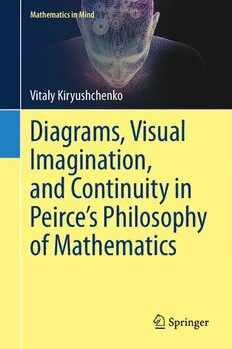
Diagrams, Visual Imagination, and Continuity in Peirce's Philosophy of Mathematics PDF
173 Pages·2023·4.104 MB·English
Most books are stored in the elastic cloud where traffic is expensive. For this reason, we have a limit on daily download.
Preview Diagrams, Visual Imagination, and Continuity in Peirce's Philosophy of Mathematics
Description:
This book is about the relationship between necessary reasoning and visual experience in Charles S. Peirce’s mathematical philosophy. It presents mathematics as a science that presupposes a special imaginative connection between our responsiveness to reasons and our most fundamental perceptual intuitions about space and time. Central to this view on the nature of mathematics is Peirce’s idea of diagrammatic reasoning. In practicing this kind of reasoning, one treats diagrams not simply as external auxiliary tools, but rather as immediate visualizations of the very process of the reasoning itself. Thus conceived, one's capacity to diagram their thought reveals a set of characteristics common to ordinary language, visual perception, and necessary mathematical reasoning. The book offers an original synthetic approach that allows tracing the roots of Peirce’s conception of a diagram in certain patterns of interrelation between his semiotics, his pragmaticist philosophy, his logical and mathematical ideas, bits and pieces of his biography, his personal intellectual predispositions, and his scientific practice as an applied mathematician.
See more
The list of books you might like
Most books are stored in the elastic cloud where traffic is expensive. For this reason, we have a limit on daily download.
